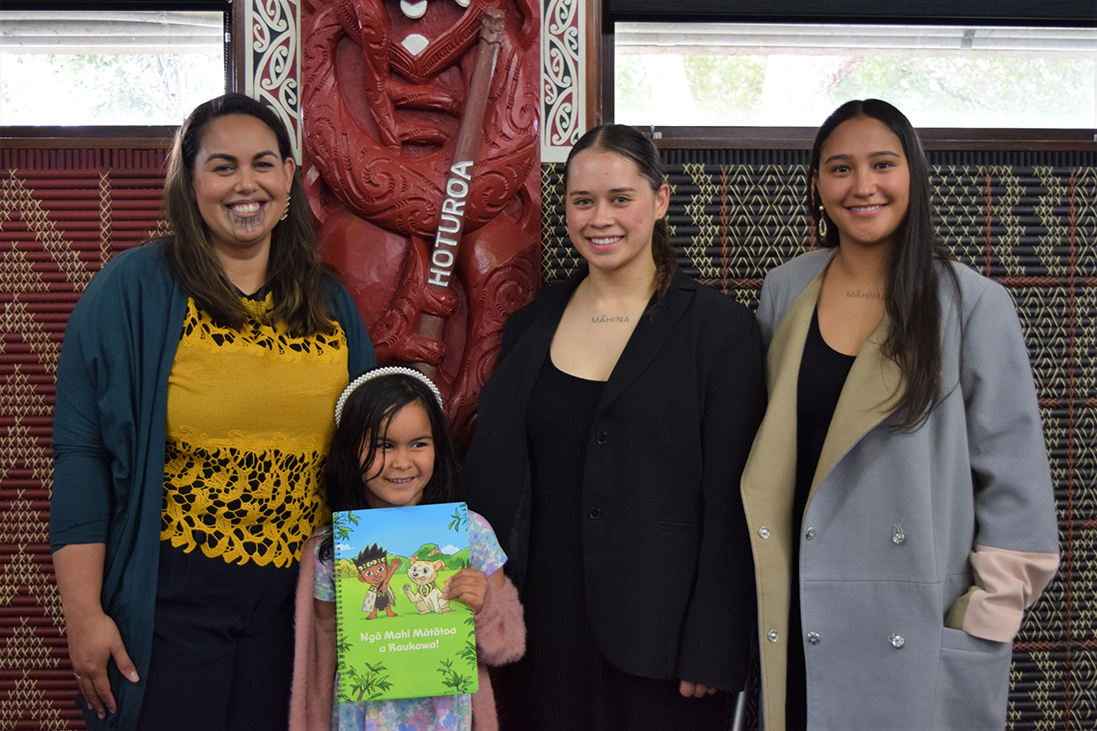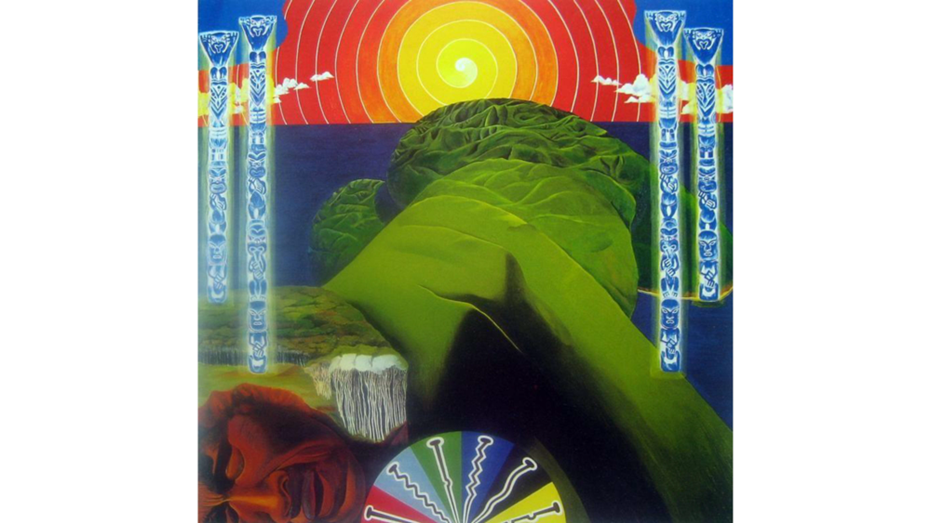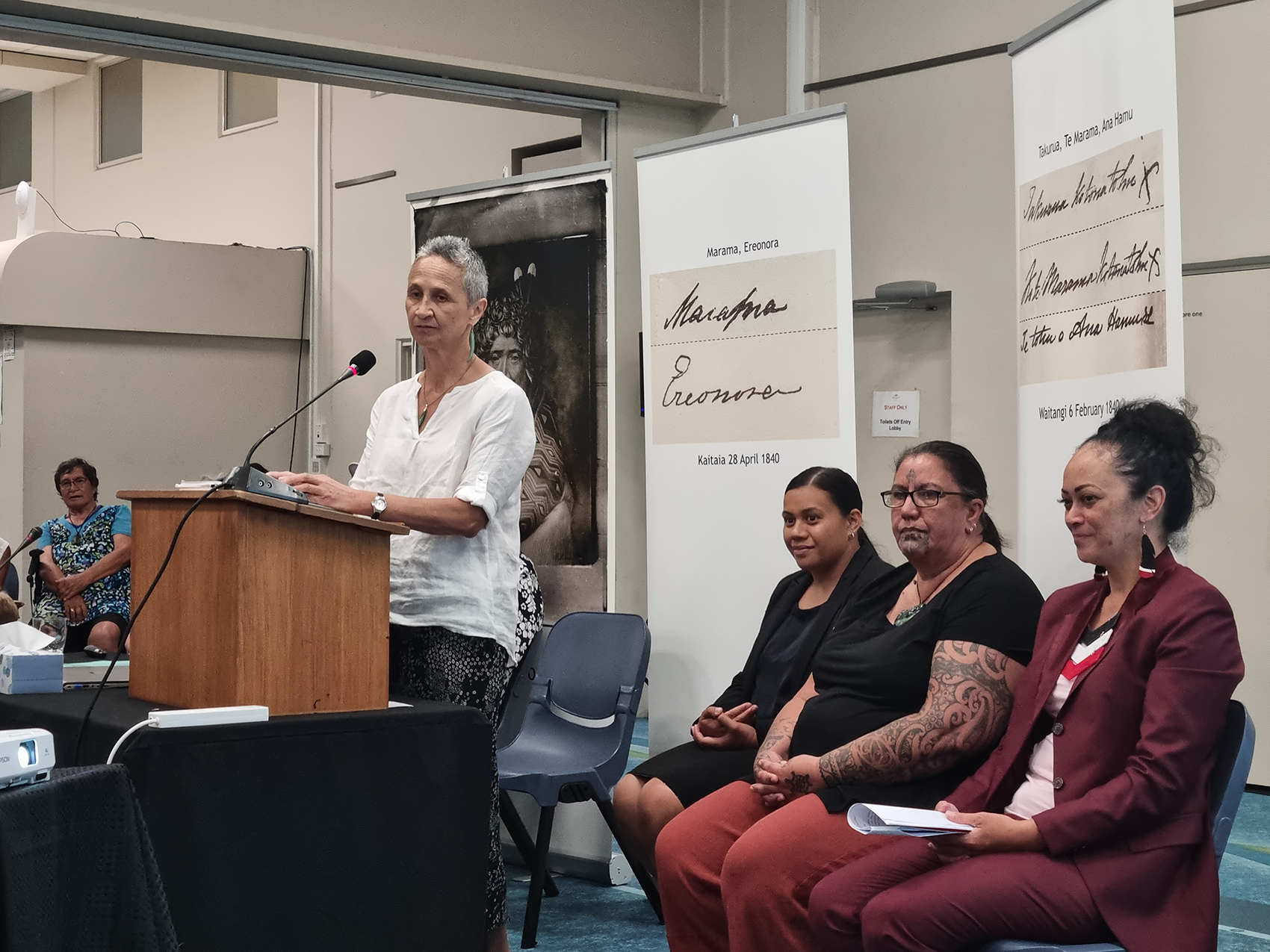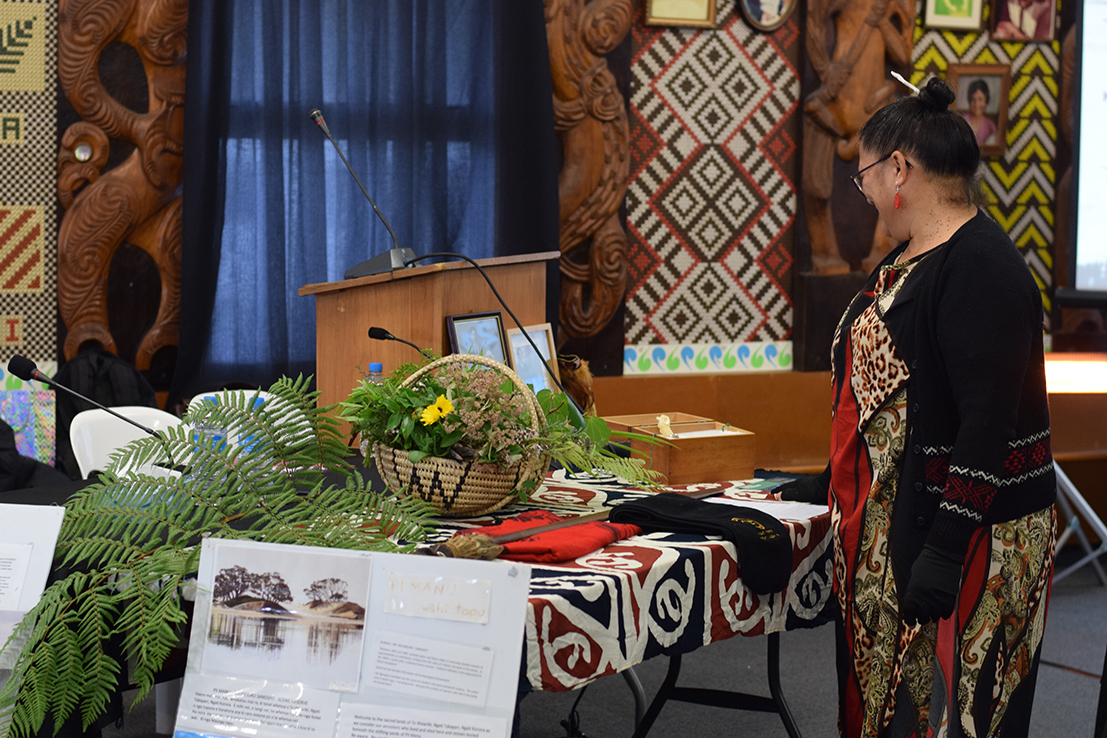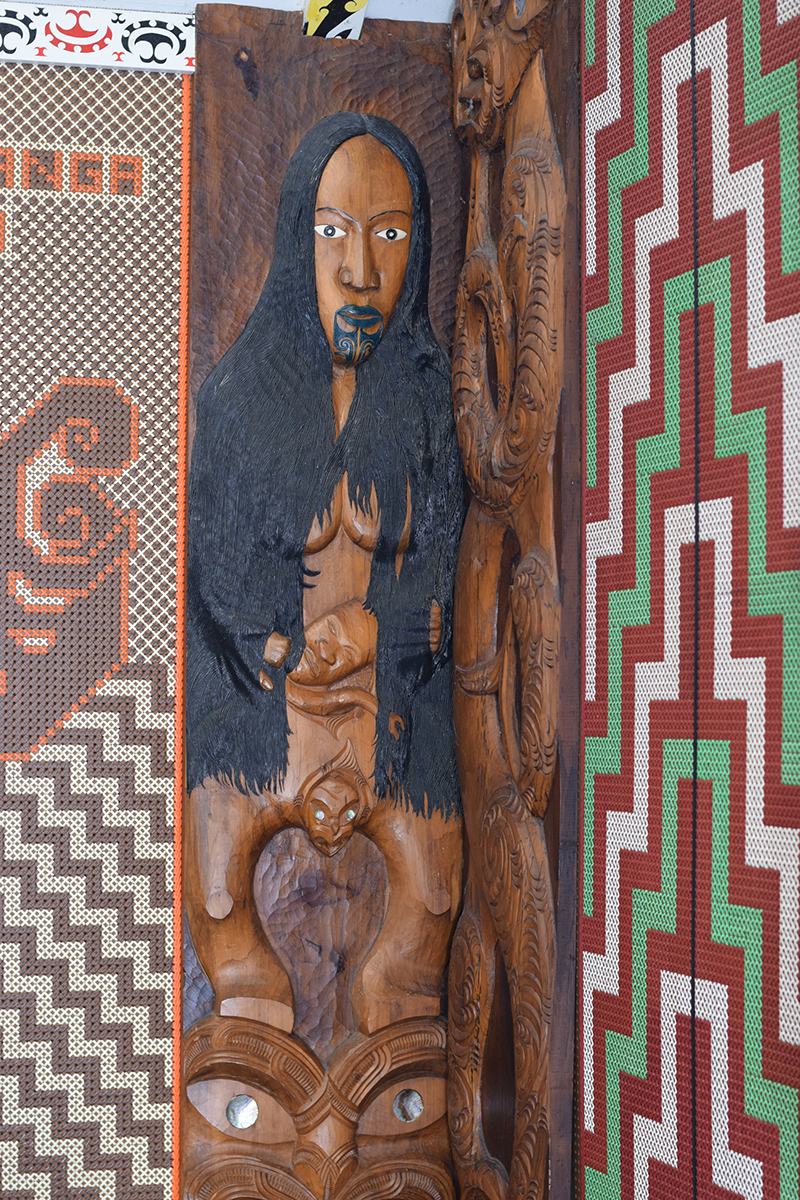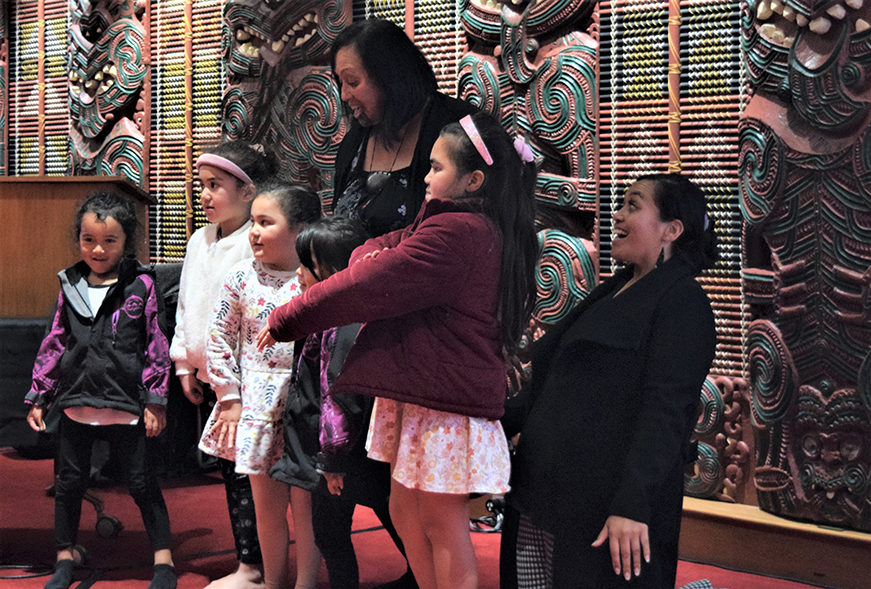The relationship of wāhine to the whenua
Ko te whakapapa o ngā wāhine ki te whenua
Witnesses referred to a deep relationship between wāhine and the whenua, operating on both a physical and spiritual level. As Ngahuia Murphy put it, ‘women are the human counterpart of Papatūānuku’ (Dr Ngahuia Murphy, doc A67, p 3).(external link) As such, wāhine had spiritual authority and obligations over the land, safeguarding it for the well-being of present and future generations. In some iwi, this extended to carrying mana whenua for their hapū, and accompanying kaitiakitanga duties (see more on the exercise of kaitiakitanga here). The practice of burying pito and placenta reinforced the intimate relationship between tangata and the land. While men also had roles in land matters, witnesses said that women had active involvement in managing resources and passing down knowledge, demonstrating their influential position in the stewardship of the whenua.
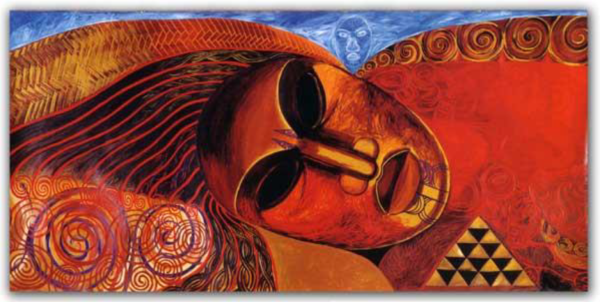
Papatūānuku E Takoto Nei, by Robyn Kahukiwa
Key witnesses who gave evidence
Tina Ngata (doc A88)(external link) explained that wāhine held immense connections to the whenua within Matakaoa and in wider Ngāti Porou whakapapa, which is reflected in the naming of numerous Ngāti Porou hapū, landmarks, wharenui, and wharekai after tīpuna wahine. For example, one of the most prominent coastal features in Wharekahika (in the Matakaoa region) is Te Toka a Te Aotaihi, named after the highest-ranking daughter of Hinerupe. Ms Ngata also referred to several key female tīpuna in Ngāti Porou whakapapa who held mana whenua, including Ruawaipu, Ruataupare, Hinerupe, Hinepare, Hineauta, Hinematiaoro, Rakaitemania, Uepohatu, and Hinekehu. Ms Ngata explained that Ngāti Porou mana whenua descended through female lines.
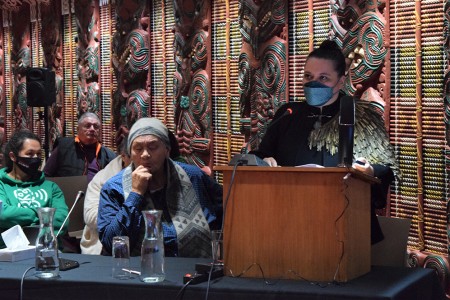
Tina Ngata giving evidence at Te Mānuka Tūtahi Marae, Whakatāne
Awhirangi Lawrence (doc A58)(external link) told the Tribunal about her tīpuna whāea who held mana whenua status in various Whangaroa hapū – Ngāti Kawau, Kaitangata, and Ngāti Ruamahue. She explained the mechanisms by which that status was inherited and the responsibilities women exercised as a result.
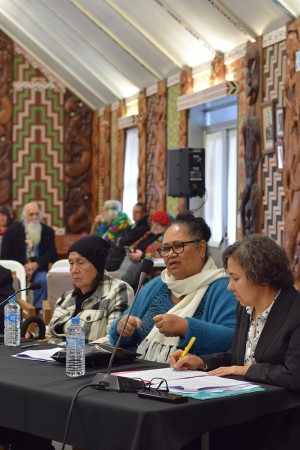
Awhirangi Lawrence (centre) pictured with Louisa Collier (left) and lawyer Janet Mason (right)
Whakataukī
- “He wahine, he whenua e ora ai te tangata! He wahine, he whenua e mate ai te tangata!”
This is a popular proverb heard throughout Aotearoa which translates to the essential, nurturing roles that women and land fulfil, without which humanity would be lost. The ability of women to bear children, the continuation of whakapapa was highly important. Many inter-tribal conflicts and warfare came about for land and resources, as is the importance of land for the continuation of whakapapa. It is believed that people inherit their mana from the mana of the gods.” (Sharon Campbell and Dr Mania Campbell, doc A39(a), p 2)(external link) - “He wahine, he whenua e ora ai te tangata! He wahine, he whenua e mate ai te tangata!”
He whakatauki e rangona whānuitia ana roto i te maha o ngā iwi i ngā tau ki muri. Ko te whakamāori i ēnei kōrero ko te hapūtanga o te wahine, me ngā mahi whakaheke toto a ngā tāne. E tohu ana ki ētahi o ngā mana kura kei te ao Māori. I pakangatia e ngā iwi, ngā mana whenua, me ngā mana wāhine, kia mau ai te mana rangatiratanga ki taua iwi. E kore rātau e tuku i to rātau mana kia wai iwi mo te kore, me kaupapa rangatira tonu ka riro ai ēnei taonga. Ka āta whakatakotohia i konei ngā tikanga mo ngā mana kura kei te ao wahine Māori. He mana tuku iho mai i ngā ira atua ki ngā ira tangata. Ka tirohia i konei ngā rehunga mana kura kei te ira wahine mai i ngā rangi tūhāhā, ki te taiao ka heke ki te Muriwai hou.” (Sharon Campbell and Dr Mania Campbell, doc A39, p 2)(external link) - “An old whakataukī, and often said in different ways ‘He wahine, he whenua mate ai te tangata’ or another version ‘He wahine, he whenua, engaro ai te tangata’ and also interpreted in different ways. My understanding is that it is akin to saying that ‘but for women, but for land – humankind would disappear,’ and that is because as the land nurtures us, that is the whenua, and as it is our mothers who nurture us, that is also the whenua, so they are one and the same thing. To put it bluntly, not a single person on this planet has come through into this world without the placenta.” (Mere Skerrett, doc A137, pp 11-12)(external link)
What witnesses said
- “It is not the opinion of Ngāti Porou scholars that women were the economic equals of men. They were in fact superior. It is noted in Apirana Mahuika’s thesis, supported by elders Eruera Stirling and Hānara Reedy, that the mana whenua of Ngāti Porou, as an economic base, descended through women’s lines.” (Tina Ngata, doc A88, p 9)(external link)
- “Another reason for the descent of mana whenua through female lines that is often cited by my own kaumātua and also confirmed by [Apirana] Mahuika and [Hānara] Reedy, is that in some instances, particularly for wāhine rangatira they may take lovers while their partners were away on military campaigns. While the patronage of a child was rarely disputed, the identity of a child’s mother could never be disputed. The descent of mana whenua from the female line was therefore a matter of added security to ensure that land was passed down along the appropriate whakapapa lines.” (Tina Ngata, doc A88, p 10)(external link)
- “Our wāhine were kaitiaki of our whenua; they were the embodiment of mana whenua. This role was always held by women because they are the keepers of the next generation. This authority ultimately derived from spiritual sources and was exercised on behalf of, and with accountability to the hapu in accordance with tikanga. This was not something wahine could ever cede to the Crown, or to men for that matter, for it was fundamentally the role of wahine to manaaki our whenua’.” (Titewhai Harawira, doc A68, p 6)(external link)
- “The holding of mana whenua would always be respected, and the land was always returned to those who hold mana whenua. It was the wāhine who were bequeathed land and held mana whenua status, ensuring that lands were not lost through marriages … In this way, customary ownership of our lands is demonstrated by our whakapapa, which is, in turn, determined by the toto / bloodlines. This bloodline is carried from the pito / the umbilical cord of the birth mother, and the burying of the pito under a tree in the region is symbolic of the mana whenua that is held. Specific groves of ‘pito trees’ were used for many generations to establish this ownership, with some still being used today.” (Louisa Collier, doc A26(b), p 4)(external link)
- “Ngātihau had specific tikanga that applied to the lands they maintained mana over. Traditionally Ngātihau owned their lands collectively with defined kainga and boundaries, and this was managed through the kaumātua, who were both male and female.” (Hana Maxwell, doc A69, p 8)(external link)
- “Each member of the hapū had rights by their whakapapa to the use of the land, to access the resources of those lands and to maintain it. The authority of our kaumatua and kuia was universally recognised within Ngātihau and by other hapū as the ones who held the knowledge of the land and to ensure it remained Ngātihau land.” (Hana Maxwell, doc A69, p 9)(external link)
- “Ko koe te whenua: Ko te whenua ko koe: You do not own the land; when you die the land will own you. It is my understanding that Māori did not OWN land, they held a right to areas of land to occupy for their use, and for their wellbeing. They held it during their lifetime, but they did not own it, for Māori did not ‘own’ Papatuanuku. However, if we are to speak in Pākeha terms, the ‘ownership’ of whenua by wāhine was a normal part of Māori tradition – wāhine who were given land by their tūpuna held that land in the same way that men did. Just like the land held by men, it would be handed on to members of their whānau through whakapapa – generally their children following the death of the parent. The relationship between women and whenua is generally seen as a relationship between female and Papatuanuku. The afterbirth from a pregnancy – the placenta – is called whenua. This is the reason that the placenta (the whenua), is returned to Papatuanuku, generally by being buried beneath a significant plant on whānau land (also whenua).” (Patricia Tauroa, doc A60, pp 20-21)(external link)
- “Each generation of wahine replants their whenua (placenta) in their whenua (land) – ‘Whakatongia te kakano: Ko wai au? Mirimiringia e te aroha…Whakatupua te ngakau Māori i roto i nga taonga tuku iho o nga matua tupuna me te wairua tapu… Tihewa Mauri Ora!!!’ This tikanga occurs where and when wāhine know about it and are able to carry it out and know where to go to plant their whenua.” (Aorangi Kawiti, doc A24(a), p 4)(external link)
- “One does not desecrate the whenua. Doing so is to do wrong to Papa-tu-a-nuku, the earth mother. It would be the same as to denigrate and insult one’s mother.” (Violet Walker, doc A66, p 11)(external link)
- “In our Ngati Tama tikanga, whenua is passed down through the female line. The wahine have the responsibility of passing on the whakapapa, so that the land can continue to provide sustenance for generations to come. Three hapū that I belong to, Ngati Hine, Ngati Hinewaiata and Ngati Ruaiti of Ngā Rauru, are named after mana wahine tūpuna.” (Michelle Marino, doc A111, p 1)(external link)
- “Everybody knows about the relationship between Papatūānuku and the wāhine. In my day, there were some wāhine that were in charge of their whenua and they had rights to their whenua. They lived on it. They exercised ahi kaa roa.” (Materangatira Lily Porter, doc A16(a), p 11)(external link)
- “Mana i te whenua is not the same as mana whenua, although it is often used interchangeably. The term mana i te whenua is preferred in the North as it centres the whenua and the responsibilities derived from that whakapapa. The duties and voice of mana i te whenua is represented by members of today’s whenua Māori, kāinga, marae and hapū groupings who work at times in alliance with each other and iwi, tauiwi and the kāwana. This responsibility is best carried out with access to the comprehensive knowledge on the layers of relationships with the whānau, hapū and iwi over time. This knowledge is carried by wāhine and tāne, with some of that knowledge carried exclusively by wāhine. This is true today, as it was in precolonial times. The cultural landscape in times before the impact of the Crown’s breaches of te Tiriti o Waitangi … show mana i te whenua being derived via lineages from wāhine. It is through these wāhine and their various unions the mana i te whenua has endured over time undisturbed.” (Huhana Lyndon and Nicki Wakefield, doc A59, pp 2-3)(external link)
- “Understanding the whakapapa of te whare tangata reveals the inextricability of women’s maternal bodies from that of perhaps the ultimate maternal body, that of Papatūānuku (mother earth). Through whakapapa each of us is united in a shared experience of residing in the womb space of Te Pō, moving through the various stages of Te Pō and finally being born into the world of light. The entanglement of maternal corporeality to the whenua, does not end here. It is significant also that within the creation stories the first human form created is female, Hine-ahu-one. These stories serve to entangle maternal bodies with the and environment. They also solidify the relationship between the maternal body and the land, and this is reaffirmed in the concept of te ūkaipō [the night feeding breast].” (Naomi Simmonds, doc A134, p 13)(external link)
- “In pre-colonial times, wāhine had the same status as whenua wāhine. They were the ones with the mana of the whenua. Women identified the same with Papatuanuku. That connection with Papatuanuku was part of their essence, their value. Papatuanuku is the giver of life and the nurturer of life.” (Raiha Ruwhiu, doc A93, p 9)(external link)
- “It was common for wāhine Māori at Waitohi’s time to be involved in land divisions. All possessions were considered noa and therefore belonged to women. The land is our mother, it is Papatuanuku, and therefore belongs to women.” (Elaine Bevan, Heeni Wilson, and Nganeko Wilson, doc A119. p 6)(external link)
- “Traditionally, it was the women who were bequeathed land and held mana whenua status. This was to ensure that lands were not lost through marriages. Mana Whenua status is inherited through whakapapa, birthrights to the area, and toto, bloodlines to an area. These women were also responsible for managing and maintaining the role of kaitiaki, a responsibility given to them as part of their mana whenua role. Their hoa rangatira, or husbands, were not always from the same area and therefore did not have the knowledge or mana whenua status that their wāhine had.” (Awhirangi Lawrence, doc A58, p 5)(external link)
- “I a ii i a rātou, I riro mā te tāne e haere ki te pakanga, ki te tohe mō whenua kē atu. Nō reira, ka hoatu e te matua ōna whenua ki tāna tamāhine, hei reira pupuru ake ai.” (Timitepō Hohepa, doc A90, p 1)(external link)
"According to the ancestors, it is for men to go to war to fight for land. Therefore, a father would pass his land on to his daughter." (Timitepō Hohepa, doc A90(a), p 1)(external link)
